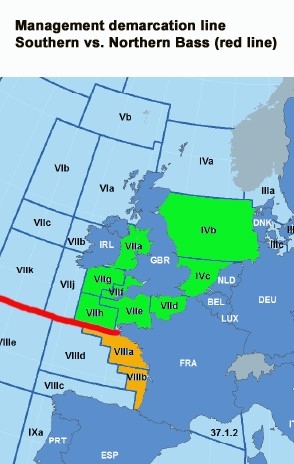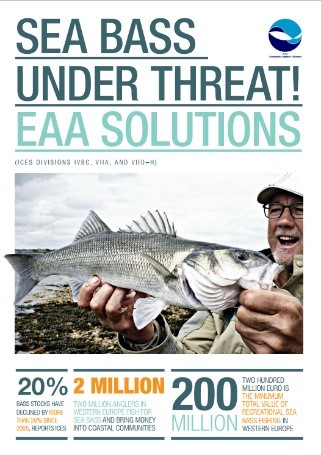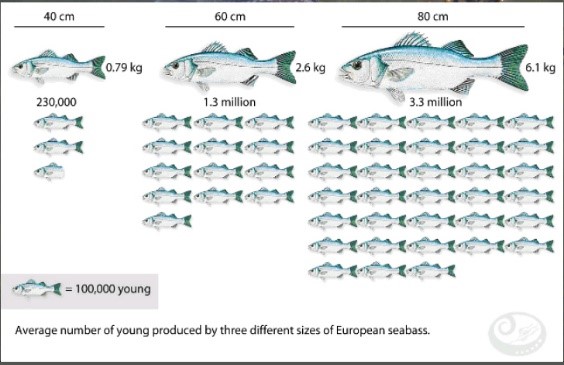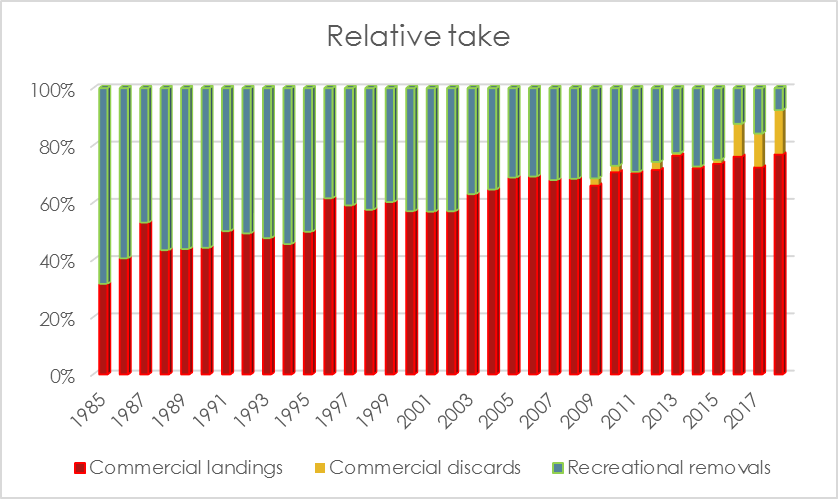EAA & EFTTA Sea bass 2019 position paper
Our main requests to the Council and the Commission
We would like to see agreed at the December’s Council Fish meeting:
- That the publics’ right to a fair share of the sea bass should be restored in 2019. The recreational sector has been loyal and supportive to the cuts made in its bass fishing opportunities in recent years due to concern over the depleted stock. In fact, it was the recreational anglers, who first raised alarm about overfishing of the bass stock and pushed hard for the EU to do something about it. The recreational sector has been consistently hit much harder by management measures than the commercial sector (see annex A further below). What always was a hard sell has now become a reason for distrust of Europe’s institutions for millions of common anglers all over Europe.
- A 3 bass bag limit (Northern bass), instead of the proposed 1 bass, and to agree to the 7 months open season as suggested by the Commission (April-Oct). In the 60s, before the commercial bass fishery took off, the recreational removals were about 90% of the total catches. In quantity the recreational removals have been relatively stable since then, also when not managed (before 2015). It is the commercial catches that have increased dramatically over the years. Ireland had to close the commercial bass fishery in 1991. It is still closed today.
 The Minimum Conservation Reference Size (MCRS) to be 42 cm for both Southern and Northern bass. For the time being everybody but commercial fishers fishing for Southern bass are obliged to fish a 42 cm MCRS. We find it very unfair that anglers in the south are obliged to fish a 42 cm MCRS in the same waters where commercial fishers fish a MCRS 38 cm. A 42 cm MCRS, or higher, is needed to secure that ca. 50 % female bass spawn at least once. Furthermore, by increasing the MCRS in general a more clear separation between farmed bass and wild bass brought to the market is achieved.
The Minimum Conservation Reference Size (MCRS) to be 42 cm for both Southern and Northern bass. For the time being everybody but commercial fishers fishing for Southern bass are obliged to fish a 42 cm MCRS. We find it very unfair that anglers in the south are obliged to fish a 42 cm MCRS in the same waters where commercial fishers fish a MCRS 38 cm. A 42 cm MCRS, or higher, is needed to secure that ca. 50 % female bass spawn at least once. Furthermore, by increasing the MCRS in general a more clear separation between farmed bass and wild bass brought to the market is achieved. - The socio-economics of recreational angling should always be taking duly into account when allocating fishing opportunities for sea bass, as it happens for commercial fishing. A study commissioned by the European Parliament gives these figures for marine recreational fisheries in Europe:
“Total economic impact of marine recreational fishing amounts to 10.5 billion euro, supporting almost 100,000 jobs.”
Some background information and documentation
The status of the Northern bass stock is improving!
Therefore, the ICES has advised, that the
total catches of Northern bass (commercial + recreational removals) can be increased from the expected 880 tonnes impact this year to
max. 1789 tonnes in 2019.
Based on this advice, the Commission has suggested an increase in catches for the commercial hook and line fishers from 5 tonnes/vessel this year to 7 tonnes/vessel next year, which equals an increase of
40%.
The Commission has also suggested to expand the open season for recreational fishing from 3 months this year to 7 months next year.
However, we find it grossly unfair to the recreational fishing sector to compare 2019 with 2018 as the Commission does. The 2018 season was agreed on the background of flawed ICES catch data, which made the Commission and Council decide not to allow any recreational retention of bass this year. ICES corrected its 2018 advice in June this year and consequently a bag limit of one bass was reinstated per the 1st of October.
 The recreational removals are now ca. 8 times less
The recreational removals are now ca. 8 times less than previously estimated. We feel sure that if the Council and the Commission would have had this insight before December last year, they would have agreed to an open season of 6 months or longer.
When looking at the historic trend in total catches (commercial + recreational), it becomes very clear from Annex A further below that the recreational sector has lost bass share to the commercial sector year-on-year. From having a share of about
90% in the 60s - before the commercial fishing for Northern bass took off – the recreational share declined to ca. 19% in 2017 and might decline further in 2019 if the proposed one bass only bag limit/7 months is agreed.
This unfair downward trend has to be broken and turned around. Therefore, we ask a 3 bass bag limit/seven months for 2019.
Also, a 3 bass bag limit is the rule for
Southern bass today. We expect that to be the same next year. A 3 bass bag limit for
Northern bass would fix the peculiarity that the bag limit is different north and south of Brest in France.
We suggest that ICES as soon as possible delivers estimates for the total bass catches 2019, which should include among the scenarios our 3 bass bag limit/7 months proposal.
The Western Waters Multiannual Plan - pending
The Commission has proposed to include (only) Northern bass in this multiannual plan (divisions 4b, 4c, 7a, and 7d–h). The European Parliament’s plenary adopted 25 October amendments to the Commission’s proposal. We urge The Council and Commission to take into account some important elements proposed by the Parliament, with regard to both the fishing opportunities 2019 as well as the final agreement of the Western Waters MAP:
● that the socio-economics of recreational angling should always be taken duly into account when allocating fishing opportunities for sea bass, as it happens for commercial fishing
● to prepare for the possibility of monthly bag limits (when a bass log-book system has been put in place )
● Manage the sea bass stock of the Western Waters (North and South) as one stock, in particular to:
oapply the same MCRS value to all bass fisheries: 42 cm
oapply the same closed months to both commercial and recreational fisheries: January, February, March, November, December
oextend the pair trawling ban to include Southern bass
oput an end to targeting of bass on the spawning grounds - not in the least the Rochebonne plateau
oConsider fin clipping of bass kept legally by recreational fishers for own consumption, as a means to improve control and address sales of poached sea bass to restaurants and other buyers
oEnsure that the bass log-book system funded by the EU will be made operational and implemented as soon as possible as to improve data collection, control and enforcement, and offer a more flexible catch management to recreational angling. The aforementioned Monthly Bag Limit has the support of anglers and was earlier proposed by the Commission in 2015, but dismissed by the Council over management concerns.


Annex A
Recreational vs. commercial catches – historically
This table was worked out by EAA based on the figures in Table 12 of the latest ICES advice concerning Northern bass (Sea bass in divisions 4.b–c, 7.a, and 7.d–h.) .
Note: Year 2018 is predicted. Official figures won’t be available before next year.

The ICES data show how the recreational share of the total bass catches has been reduced year after year.
November 2018
For notes and references please download the position paper
Downloads: